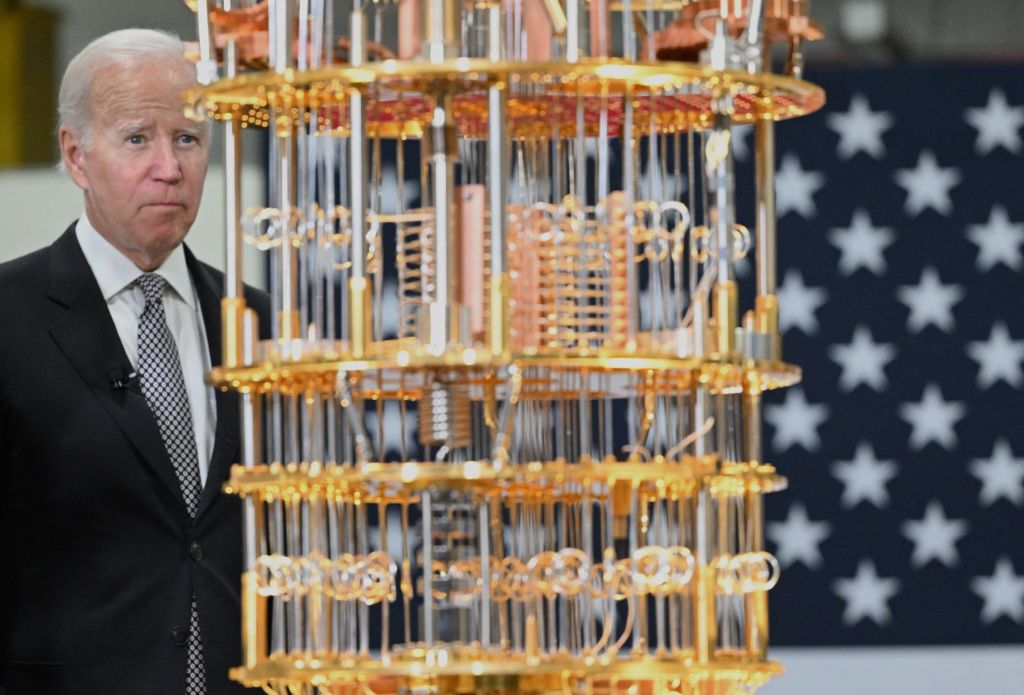
Australia is undergoing an exciting period of strategic technology policy review and development. The release of its first National Quantum Strategy this week committed the government to building the world’s first error-corrected quantum computer. This is a strategically important technology that has the potential to improve productivity and supply chain efficiency in diverse industries, lower costs across the economy, help reduce carbon emissions and improve public transportation.
The ambitious goal was a clear signal to industry and the world that Australia is willing to lead the future of quantum as a technology creator. Building an error-corrected quantum computer requires the Australian government to coordinate a whole-of-nation approach through public-private partnerships (PPPs) and engaging trusted allies and partners. PPPs will be key in identifying challenges and solutions associated with the arrival of quantum computing, of which infrastructure investment is a foundational component.
Quantum computing is still in its nascent stages. Currently quantum computers are affected by ‘noise’, which refers to all the things that cause interference in their processing. These ‘noisy’ interferences cause information in qubits—a basic unit of quantum information—to become randomised, which leads to errors. Quantum Error Correction (QEC) is an algorithm that identifies and fixes errors in quantum computers. Achieving scalable QEC is necessary to build a ‘useful’ error-corrected quantum computer.
Australia is already a global leader in the quantum technology space, spearheading research and development breakthroughs in areas such as quantum optics, semiconductor and superconducting devices, and precision timing and sensing. Australia’s quantum strategy states that quantum computing, communications and sensing could collectively contribute $6.1 billon to its GDP by 2045. Despite a longer timeline for its arrival, quantum computing needs to be a priority for Australia and the new strategy reassuringly recognises this.
Beyond reaping the economic advantages that come with first market adoption, leaders in quantum computing will shape the norms and standards in the sector and be best placed to leverage the defence capabilities and security that comes with technological advantage. The timely announcement of the Australian’s government’s investment of $3.4 billion into the Advanced Strategic Capabilities Accelerator (ASCA) provides opportunities to ensure quantum computing innovation meets defence needs.
One of the key challenges Australia faces is the gap between innovation and commercialisation known as the valley of death. This is a global problem across emerging technology sectors including in the US which has one of the best innovation ecosystems and agile business environments for tech-startups in the world. The ability to predictably translate design and innovation leadership into scaled-up technologies, was acknowledged by the US government in a 2023 report on biotechnology goals.
The global valley-of-death trend indicates that market dynamics alone are not enough to rapidly accelerate the development of these emerging technologies at a pace conducive to the needs of nations during this period of intense strategic technological competition. China’s emphasis on technology innovation policy and its rise from 14th to 11th on the Global Innovation Index between 2019 and 2022, underpins the urgency for Australia and its allies who don’t want to see China’s increasing innovation translate into a capability advantage.
Australia and the US have a competitive advantage as leaders in quantum innovation due to the shared alliance work. A 2021 joint statement of cooperation on quantum technologies between Australia and the US is recognition of this. Leveraging this government-to-government cooperation to facilitate PPPs that capitalise on respective industry strengths is central to avoiding the valley-of-death, and bringing large-scale quantum computing online.
Australia’s leadership in quantum computing R&D and innovation provides incentive for partnerships with US industry leaders in semiconductor manufacturing. A foundry capability is an essential infrastructure requirement for scaling quantum computing, that Australia’s nascent semiconductor industry is not currently equipped to support. A PPP of this nature helps mitigate the-valley-of-death risk by partnering Australian innovation with experienced companies that will provide the infrastructure resources to help scale and commercialise quantum computing technology. Incentivising foreign industry to build in Australia requires investment signaling from the Australian government, and efforts to reduce barriers of entry for foreign investors. PPPs of this nature diversify critical technology supply chains with trusted partners, boost the economy and ensure allied leadership in critical technologies. Collectively, it builds out the necessary infrastructure and materials needed to support leadership in large scale quantum computing, which was one of the five themes identified as central to realising Australia’s quantum goals.
Candid discussion between the public and private sectors across Australia and the US will be necessary to identify these barriers to developing critical enabling infrastructure for quantum computing.

